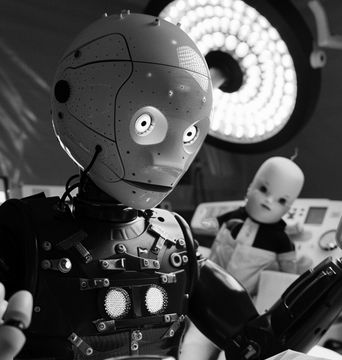MIT BREAKTHROUGH: GENERATIVE AI MODELS SET TO REVOLUTIONIZE HUMANOID ROBOTICS!

The field of robotics is entering a fascinating phase as artificial intelligence (AI) ties in with the vision of crafting multipurpose humanoid robots. The scenario, lifted straight out of science fiction, is rapidly transitioning into a reality, though not without its own set of profound challenges. A key hurdle rests heavily on the shoulders of training; designing general-purpose systems remains a perplexing maze of intricacy. However, promising strides in reinforcement and imitation learning offer glimmers of progress amid the prevailing disjointed approaches to robotics training.
Enter the recent groundbreaking research from MIT, which introduces policy composition (PoCo) as a groundbreaking solution to this training conundrum. This scheme involves the intelligent use of small, task-specific datasets to instill competency in our future mechanical counterparts. The approach represents a significant step toward mapping out a more integrated path for the progression of robotics training.
The method is quite ingenious. Utilizing a diffusion model, each strategy for completing a specific task is learned from a distinct dataset. These discreet strategies are then masterfully amassed into a comprehensive policy, a sort of catch-all guide that empowers the robot to perform an array of tasks in differing contexts.
Such an approach doesn't merely streamline training procedures; it also enhances outcomes. MIT's research confirms the method boosted task performance scores by a staggering 20%. The upgrade isn't limited to the execution of simplicity, but also includes complex tasks requiring the use of multiple tools and the adaptation to unfamiliar tasks—a significant leap forward in robotics mastering versatility.
What does this mean for our future with robotics? It brings us closer to achieving the sophisticated aspiration of the robotics industry: all-purpose robots. The ultimate goal that excites scientists, engineers, and technology enthusiasts alike is the creation of intelligent systems that enable robots to fluidly swap different tools to perform different roles.
Such multipurpose robots could revolutionize sectors like healthcare, agriculture, manufacturing, and even our daily household chores. Imagine a robot that could cook dinner, then transform into a homework tutor, and later, assist a senior family member with their physiotherapy exercises.
MIT's innovative use of generative AI in creating these versatile humanoid robots, while still in its relative infancy, moves us significantly closer to the future we've only imagined in high-concept science fiction. As PoCo continues to evolve, proving its utility in enhancing the adaptive skills of these humanoid robots, we inch closer to a reality where navigating the intricacies of life could well be a shared task between humans and robots. It indeed could represent the dawn of a new era in how we conceive of and interact with robotics.